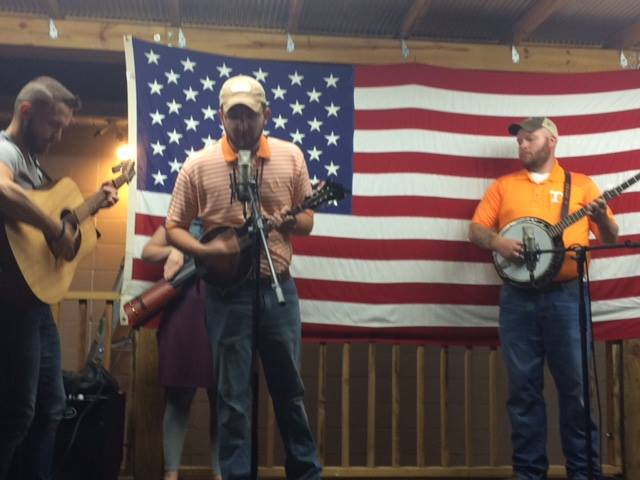The Enduring Music of the Mountains
/Last Saturday I had the opportunity to join my friends and neighbors at the 1st Annual Bluegrass Saturday Night On the Road in Jamestown, Tennessee. Now, we’ve talked here before about the timeless music that we now call Bluegrass. It came with our ancestors from Ireland and Scotland, and we still enjoy it today. Well the gathering Saturday night certainly reminds me that this musical tradition lives on.
Jamestown’s country music radio station, WDEB, airs a weekly show of bluegrass music known as Bluegrass Saturday Night and hosted by “Country John B.” Mullinix. This week they did a live, remote show at the American Legion building inviting several bands to play and all the community to come out and enjoy good music, grilled burgers and hotdogs and great fellowship.
They honored all of the veterans in attendance, especially those who fought in World War II. They played the national anthem and everyone stood with hat in hand. We prayed. Then we clapped and tapped our toes, laughed, chatted and maybe even sang along a little bit.
How exciting it is to get up a show like this and have almost all the talent be local. And young – several of the groups had 20-somethings playing with them and I didn’t see anyone needing a cane to get up on stage. Surely this is a sign that our music is not just surviving but thriving in our hectic twenty-first century. There’s no question that one of the keys to the preservation of music that originated in the old country was the remoteness of our mountain home for a couple of centuries. But today the world is at our doorstep with planes, interstate highways and the world wide web. Still, we are drawn to these old sounds, many of the songs are familiar and the strains of the modern bluegrass songs are often as comfortable as the traditional ones.
It’s always fun to get out and see neighbors you don’t often get to talk to. And this past Saturday evening was a pleasant time on the mountain with the rain clearing out in plenty of time for parking and setting up – probably in answer to Mr. Mullinix’ prayers. Add in the talented picking and familiar tunes and you’ve got the best kind of Saturday night.
















